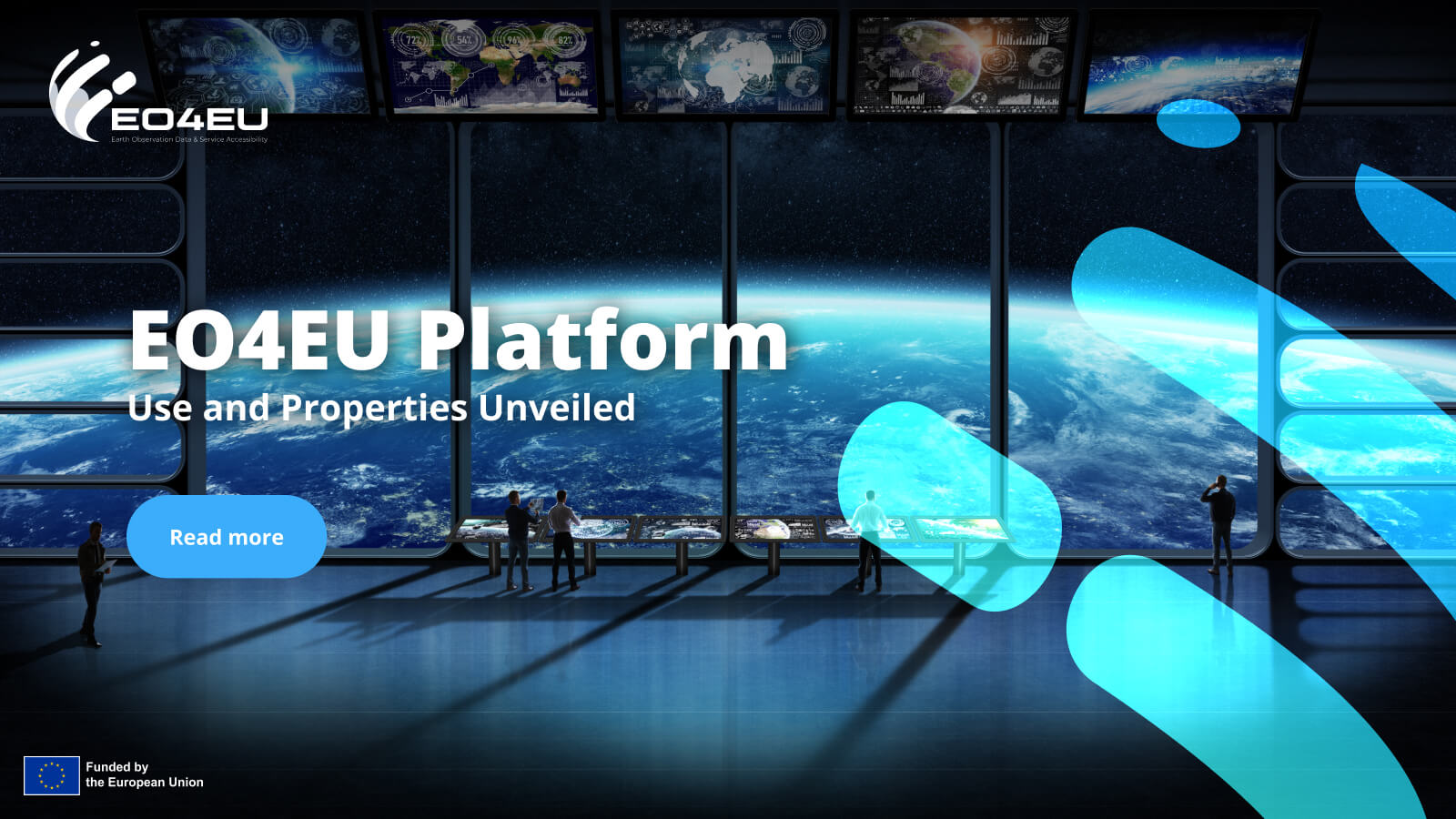EO4EU Platform - Benefits, Components and Functionalities
The EO4EU Platform use and properties have been outlined from eBOS to provide a comprehensive overview, detailing the expected features and benefits.
Combining cutting-edge technologies such as machine learning, knowledge graphs, and extended reality with Earth observation (EO) data, the EO4EU Platform aims to democratise access to EO data for a wide range of users, including policy-makers, researchers, academia, and the private sector.
The platform's design emphasises usability for both technical and non-technical users.
As the EO4EU project progresses, the spotlight now turns to the various components and practical applications of the EO4EU Platform. Significant advancements have been made, including the early access launch beginning of June 2024.
Key Components of the EO4EU Platform
1. User Account
- Purpose: Manage authentication, preferences, and personalized settings.
- Usage: Users start by logging into their EO4EU account to access personalised features and manage their settings.
2. Knowledge Graph
- Purpose: Integrate various data sources and enhance data understanding.
- Usage: Users leverage the knowledge graph to connect and contextualise different datasets, facilitating sophisticated decision-making and analysis.
3. Workflow Editor
- Purpose: Create and manage data processing pipelines.
- Usage: Users design complex workflows visually, integrating and manipulating datasets to meet their data processing requirements.
4. File Explorer
- Purpose: Browse and manage data files.
- Usage: Users search for and select specific EO datasets by entering keywords and filtering by date, location, or data type.
5. Data Visualisation
- Purpose: Visualize data through charts, graphs, and tables.
- Usage: Users create interactive dashboards to interpret and present their processed data effectively.
6. Map Visualisation
- Purpose: Provide spatial context to EO data.
- Usage: Users explore geographic information by customising map layers and visualisation parameters to display data spatially.
7. XR/VR
- Purpose: Offer immersive experiences with EO data.
- Usage: Users interact with data in a 3D-space for training, simulation, and detailed analysis using VR controls.
8. Console
- Purpose: Execute scripts, run queries, and perform complex data manipulations.
- Usage: Advanced users and developers perform more intricate operations and data processing tasks through a command-line interface.
9. User History
- Purpose: Track user activities and manage workflows.
- Usage: Users can easily retrieve and replicate previous work, efficiently managing their workflows and revisiting past analyses.
Benefits and Functionalities
The EO4EU Platform is designed to provide numerous benefits, including:
- An easy-to-use interface suitable for both technical and non-technical users.
- Access to a wide array of AI and ML resources.
- Tools for combining, interpolating, and extrapolating datasets.
- The ability to access and manipulate raw EO data effortlessly.
- Enhanced user experience through immersive VR capabilities.
- The new platform page on the EO4EU website highlights these features and invites users to sign up for early access. It promises an innovative and user-friendly approach to EO data utilisation.
Visit the EO4EU Platform page to stay updated and be among the first to explore the platform's transformative capabilities.
